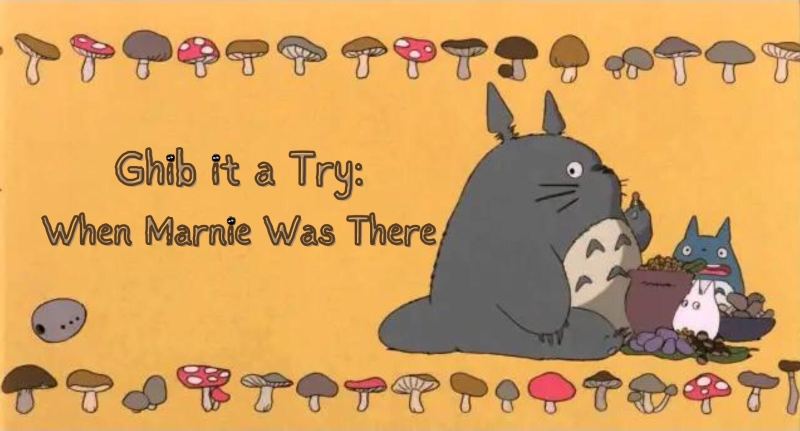This article is a review and includes subjective thoughts, opinions and critiques.
In my last column, I wrote on Hiromasa Yonebayashi’s “When Marnie Was There” (2014), a quiet meditation on the redemptive power of girlhood. This week, we’re retracing the director’s debut film, “The Secret World of Arrietty” (2010), which similarly follows a sick child, Shō, as he retreats to the countryside to rest. There, he accidentally discovers a family of three “Borrowers,” so-called because their incredibly small size propels them to “borrow” household items from the larger, human world.
Arrietty, the Borrower family’s adventurous teenage daughter, yearns to experience the human world around her. Our first glimpse of her is through Shō’s eyes as he arrives at his mother’s old house: sliding down the stem of a plant with one hand, Arrietty clutches a bay leaf and shiso in the other to bring back to her mother, who chides her and warns against of the dangers of the outside world. The domesticity and conservatism of her mother juxtaposed with Arrietty’s exploratory spirit is the major crux of tension throughout the film.
Her mother’s anxieties about the human world are outwardly projected through Arrietty’s first borrowing mission with her father. Sneaking out into Shō’s house at night, after its human inhabitants have gone to bed, the familiarity of a normal household is intricately transformed into an almost-wilderness landscape through the Borrower’s perspective — for the audience, the distance between a table and the floor is negligible, taken for granted. For the smaller Borrowers, getting down involves a series of rope and trolley contraptions. On top of the ever-present anxiety of being discovered, because of the Borrowers’ small form, they have to adopt mechanical ways to adapt to the human world that they choose to cohabit.
Along with films like “Princess Mononoke” (1997), “Totoro” (1988), “Castle in the Sky” (1986), “The Secret World of Arrietty” can be explicitly read as an environmentalist film about the fraught cohabitation between an endangered species and the humans that they “borrow” from. The story of the Borrowers (adapted from a 1952 English children’s novel, “The Borrowers”) locates various concerns about species extinction, cohabitation with nature and, perhaps most ominously, a deep human vice towards control and colonization.
After Arrietty confides in Shō that her family is the last of the Borrowers, Shō remarks on the degradation of the natural world. “So many beautiful species. But the environment changed, so they died out. It’s sad, but that’s what fate has in store for your kind.” Shō’s words, specifically his reference to “fate,” erase humanity’s role in the destruction of the environment. Arrietty responds angrily to this sentiment: “You’re the one who changed things… We’ll make do, we always have. You don’t know anything about us!”
While Shō has no intention of harming the Borrowers (he repeatedly offers sugar cubes to Arrietty), Yonebayashi complicates Shō’s gestures of kindness by showing the controlling nature of his well-intentioned actions. In Shō’s house, there is a beautiful dollhouse that Arrietty yearns for. Shō, wanting to help the Borrowers, attempts to replace their existing house under the floorboards with this dollhouse.
The scene is shot from two perspectives: from Shō’s perspective, as he easily dislodges Arrietty’s family home and carefully reinstalls the dollhouse, and from Arrietty’s mother’s perspective, who feels the house tremble and shake before seeing a monstrous hand reaching down for her. The scene forces the viewer to reconsider broader human good-faith efforts towards “helping” the other, whether that is other human beings or other species entirely.
On an aesthetic level, the film is perhaps Ghibli’s most delicately animated (with Miyazaki being the lead artist). Following Arrietty into her secret world, we see that it isn’t simply our world in miniature, but one of extreme realism made out of objects that we, humans, are familiar with. Some of the most prominent examples include Arrietty’s hair clip being a hanger clip; her room decorated with large pieces of leaves and flowers that indicate scale; and her first borrowed object, a sewing pin, which she later uses as a sword.
The many aspects of the film fully endow the Borrowers with complex material and emotional lives, centering their experience navigating through a world of both intentional and unintentional human damage. Though the friendship between Shō and Arrietty is touching, in the end, it’s only a part of the grander narrative of survival for the Borrower family.
Watching the film, one easily falls into assumptions about savior narratives or even possible romance; however, “Arrietty” constantly undercuts these tropic depictions, and, despite delivering heart-warming relationships, ultimately denies easy resolutions.
